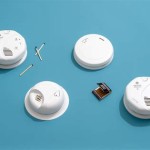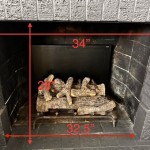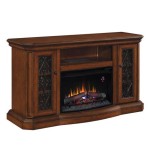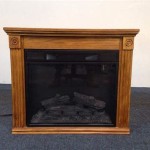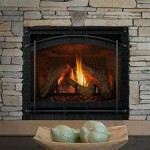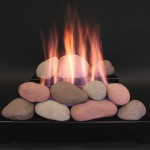Fireplace Cooking Recipes: Embracing the Ancient Art of Hearth Cuisine
Fireplace cooking, an age-old practice, offers a unique culinary experience that combines the rustic charm of open-fire cooking with the distinct flavors imparted by wood smoke. Reviving this tradition allows for the creation of hearty and comforting meals that are both flavorful and visually appealing. The following recipes offer a starting point for exploring the versatility of fireplace cooking, ranging from simple roasts to more complex stews and baked goods.
The Fundamentals of Fireplace Cooking
Successful fireplace cooking relies on understanding the dynamics of heat control and fire management. Unlike conventional ovens or stovetops, the heat in a fireplace is less consistent and requires constant monitoring. Factors like the type of wood used, the size of the fire, and the placement of the food all contribute to the final outcome. Hardwoods, such as oak and hickory, provide a longer-lasting and more consistent heat source compared to softwoods like pine, which burn quickly and produce excessive smoke. Prior to commencing any cooking venture, ensuring the fireplace is clean and properly ventilated is paramount.
The tools required for fireplace cooking are equally important. A sturdy tripod or adjustable grill grate is essential for positioning food above the coals. Long-handled utensils, such as tongs, spatulas, and ladles, are necessary for safe and effective food handling. A Dutch oven, made of cast iron, is a versatile tool that can be used for braising, roasting, and baking. Heat-resistant gloves are also essential for protecting hands from the intense heat emitted by the fire.
Mastering the art of temperature control is crucial for preventing food from burning or remaining undercooked. The heat can be regulated by adjusting the size and intensity of the fire, raising or lowering the grill grate, or moving the food closer to or further away from the coals. The "hand test" is a simple method for gauging the temperature of the fire: hold a hand at the intended cooking height and count how many seconds it takes before the heat becomes uncomfortable. A count of one to two seconds indicates high heat, three to four seconds indicates medium-high heat, and five to six seconds indicates medium heat. Lower heat requires a count of seven or more seconds.
Hearty Roasts Over the Embers
Roasting meat over an open fire is a fundamental technique in fireplace cooking. The radiant heat from the embers sears the surface of the meat, creating a flavorful crust, while the interior remains moist and tender. This method works particularly well for large cuts of meat, such as pork shoulder, chicken, and lamb. Preparation involves selecting a suitable cut of meat, seasoning it generously, and positioning it strategically over the fire.
Recipe: Fire-Roasted Pork Shoulder
Ingredients:
- 1 (4-5 pound) pork shoulder roast
- 2 tablespoons olive oil
- 2 tablespoons salt
- 1 tablespoon black pepper
- 1 tablespoon smoked paprika
- 1 teaspoon garlic powder
- 1 teaspoon onion powder
- 1/2 teaspoon cayenne pepper (optional)
Instructions:
1. Prepare the Fire: Build a medium-sized fire using hardwood. Allow the wood to burn down to a bed of hot embers. 2. Prepare the Pork: Pat the pork shoulder dry with paper towels. This helps the seasoning adhere and promotes browning. 3. Season the Pork: In a small bowl, combine the salt, pepper, smoked paprika, garlic powder, onion powder, and cayenne pepper (if using). Rub the mixture all over the pork shoulder, ensuring it is evenly coated. Drizzle with olive oil. 4. Roast the Pork: Place the pork shoulder on a grill grate positioned about 12-18 inches above the embers. Rotate the pork shoulder every 30-45 minutes to ensure even cooking. 5. Monitor the Temperature: Use a meat thermometer to monitor the internal temperature of the pork. Cook until the internal temperature reaches 195-205°F (90-96°C). This process may take several hours, depending on the size of the roast and the intensity of the fire. 6. Rest and Serve: Once the pork is cooked, remove it from the grill grate and wrap it loosely in aluminum foil. Let it rest for at least 30 minutes before shredding or slicing. Serve with your favorite sides, such as coleslaw, cornbread, or roasted vegetables.
This recipe illustrates the basic principles of fire-roasted meats; the flavor from the wood smoke penetrates the meat, creating a depth of flavor that is difficult to achieve with other cooking methods. The long cooking time allows the connective tissue to break down, resulting in a tender and succulent final product. Adjustments to the seasoning blend can be made to suit individual preferences.
Simmering Stews in a Dutch Oven
A Dutch oven is an invaluable tool for fireplace cooking, providing a contained environment for braising, stewing, and baking. The heavy cast iron construction ensures even heat distribution and retention, making it ideal for long, slow cooking. Stews, in particular, benefit from the low and steady heat of the fireplace, allowing the flavors to meld and deepen over time. Key considerations for dutch oven use within a fireplace are proper placement and the safe handling of a hot, heavy pot.
Recipe: Fireplace Beef Stew
Ingredients:
- 2 pounds beef chuck, cut into 1-inch cubes
- 2 tablespoons olive oil
- 1 large onion, chopped
- 2 carrots, peeled and chopped
- 2 celery stalks, chopped
- 4 cloves garlic, minced
- 1 teaspoon dried thyme
- 1 teaspoon dried rosemary
- 1/2 teaspoon salt
- 1/4 teaspoon black pepper
- 4 cups beef broth
- 1 (14.5 ounce) can diced tomatoes, undrained
- 2 medium potatoes, peeled and cubed
- 1 cup frozen peas
Instructions:
1. Prepare the Fire: Build a medium-sized fire using hardwood. Allow the wood to burn down to a bed of hot embers. 2. Sear the Beef: In a Dutch oven, heat the olive oil over the embers. Add the beef cubes in batches and sear on all sides until browned. Remove the beef from the Dutch oven and set aside. 3. Sauté the Vegetables: Add the onion, carrots, and celery to the Dutch oven and cook until softened, about 5-7 minutes. Add the garlic, thyme, rosemary, salt, and pepper and cook for another minute. 4. Combine Ingredients: Return the beef to the Dutch oven. Add the beef broth and diced tomatoes. Bring to a simmer. 5. Simmer the Stew: Cover the Dutch oven and place it directly on the embers or on a grill grate close to the embers. Simmer for 2-3 hours, or until the beef is very tender. Stir occasionally to prevent sticking. 6. Add Potatoes and Peas: Add the potatoes to the Dutch oven and continue to simmer for another 30 minutes, or until the potatoes are tender. Stir in the frozen peas during the last 5 minutes of cooking. 7. Serve: Remove the Dutch oven from the fire and let the stew rest for a few minutes before serving. Garnish with fresh parsley, if desired.
The benefit of cooking in a Dutch oven over the fire, in addition to the flavor from the wood smoke, lies in the even heat distribution within the vessel. This ensures that the ingredients cook uniformly and the flavors meld together seamlessly. This adaptability of the Dutch oven enables a wide range of dishes to be prepared within the fireplace setting.
Rustic Breads and Baked Goods
Baking in a fireplace requires careful attention to temperature control and positioning. Dutch ovens are again indispensable for baking, providing a contained and consistent heat environment. Breads, biscuits, and even desserts can be successfully baked in a fireplace, offering a unique and satisfying culinary experience. The key is to maintain a stable temperature and avoid direct contact between the food and the flames.
Recipe: Fireplace Biscuit
Ingredients:
- 2 cups all-purpose flour
- 1 tablespoon baking powder
- 1 teaspoon salt
- 1/2 cup cold butter, cut into cubes
- 3/4 cup milk
Instructions:
1. Prepare the Fire: Build a medium-sized fire using hardwood. Allow the wood to burn down to a bed of hot embers. You want the Dutch oven to be at a consistent 350 Degress Farenheight. 2. Prepare the Dough: In a large bowl, whisk together the flour, baking powder, and salt. 3. Cut in the Butter: Cut the cold butter into the dry ingredients using a pastry blender or your fingers until the mixture resembles coarse crumbs. 4. Add the Milk: Add the milk and stir until just combined. Do not overmix. 5. Form the Biscuits: Turn the dough out onto a lightly floured surface and gently pat it into a 1-inch thick rectangle. Use a biscuit cutter or a knife to cut out biscuits. 6. Bake the Biscuits: Grease a Dutch oven or line it with parchment paper. Place the biscuits inside the Dutch oven. 7. Baking: Place the lid on the oven and set the dutch oven directly on the fire for 20 minutes or until the biscuits are golden brown.
This recipe demonstrates how simple biscuits can be baked utilizing the heat of the fireplace. The radiant heat from the embers cooks the biscuits evenly, creating a golden-brown crust and a soft, fluffy interior. The utilization of specific tools like parchment paper or a well-seasoned dutch oven can ensure the preservation of the baked products and prevent sticking. With proper preparation and temperature management, a range of baked goods can be enjoyed while fireplace cooking.

Recipes To Cook On An Open Fire Jamie Oliver

Easy And Delicious Fire Pit Cooking Max Pits

Campfire Cooking Recipes And Tips For Over An Open Fire

16 Surprising Recipes You Can Cook Over A Campfire Land O Frost

Wood Fired Cooking Techniques And Recipes For The Grill Backyard Oven Fireplace Campfire Kansas City Bbq

57 Best Cast Iron Skillet Recipes Cooking Meal Ideas

Fireplace Trout Recipe Nyt Cooking

Cozy Recipes To Make By The Fireplace

Have Fun Cooking On Your Outdoor Fireplace We Love Fire

Campfire Cinnamon Roll Ups Almost Supermom
Related Posts



